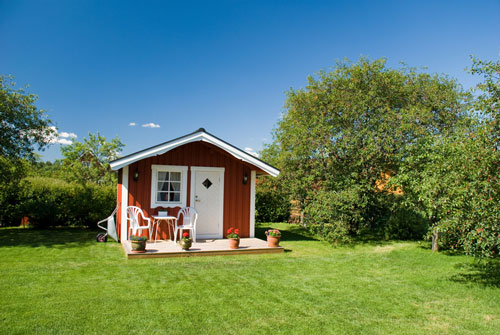
The Tiny Life explains that tiny houses are a “social movement where people downsize the space they live in.” People do these for a variety of reasons such as environmental concerns, financial concerns, and desire for more time and freedom [1]. Tiny houses on average cost about $200 to $400 per square foot, putting a midrange home between $20,000 to $40,000 [2].
Tiny houses usually have a kitchen, a bathroom, some sort of living space, and a lofted bed. Most people need to hook up to a utilities outlet to have electricity, but there are also self-sustainable houses. Taking advantage of renewable resources like solar power, tiny homes are living up to the expectation of going green.
Most Americans spend 1/2 to 1/3 of their income on their home, making it difficult to save and go on extravagant vacations. On the contrary, tiny home owners are seeing a big break in mortgage costs with 68 percent of tiny home owners having no mortgage at all. Over time the money you put into paying your mortgage will equal about 15 years of working. So maybe tiny house owners are on to something.
Now before you go and buy a tiny house, you need to examine your lifestyle. Not everyone is made to live in a tiny home. U.S. News suggests to consider things like where you would put it, whether or not you would want it to be on wheels, your plan for utilities, and what your goal is in buying a tiny house [3]. Though the price tag is lower than regular houses, there are a couple disadvantages that make the tiny house a little less appealing.
First of all, it is small. Though this seems obvious, it's something you need to truly think about. If you have a spouse, kids, or even pets, things can begin to get crowded rather quickly. You don't have a space to be alone. There is nowhere to escape. Be sure that you can handle living in close quarters for extended periods of time before you jump into this purchase.
Next, you might not have a real toilet. Since it's difficult to have a water tank in a tiny house, most toilets are compost based. So you will need to dump your toilet every few days for liquids and every three weeks for solids [4].
Land is another issue. Many cities have building codes of which you must adhere. Sometimes, tiny houses aren't big enough to pass housing standards and you won't be allowed to build your house. So before you build, check your city requirements.
Tiny houses have received a lot of hype with reality TV shows spotlighting their minimalistic charm. If you are looking for a compact space with a fairly small price tag, consider looking into a tiny home.
Sources:
[1] What Is The Tiny House Movement?
[2] 12 Tricked-Out Tiny Houses, And Why They Cost So Much, Forbes
[3] Could You Survive in 150 Square Feet? The Lowdown on Tiny Homes
[4] Composting Toilet FAQ and Debunking Myths, Gone with the Wynns